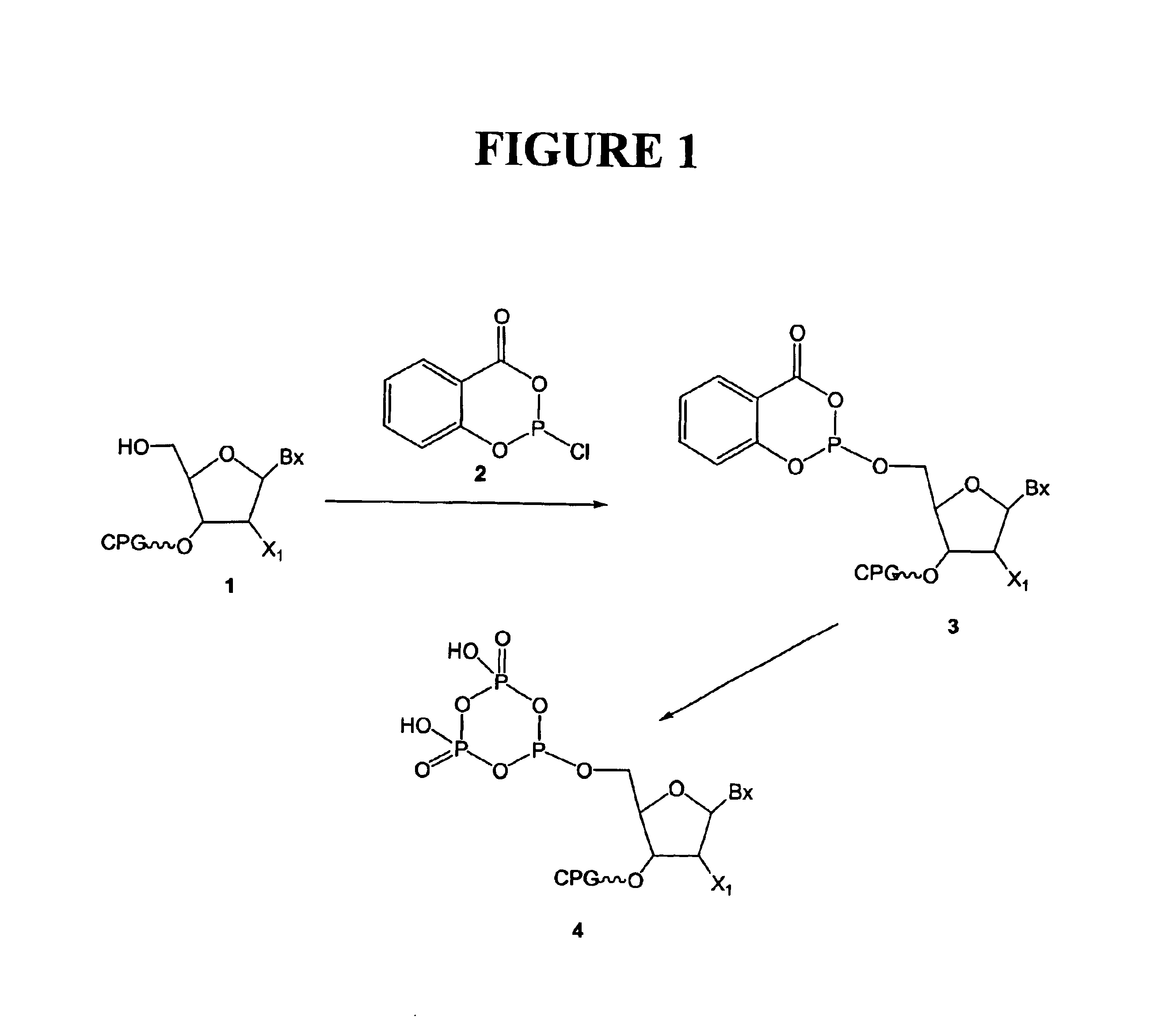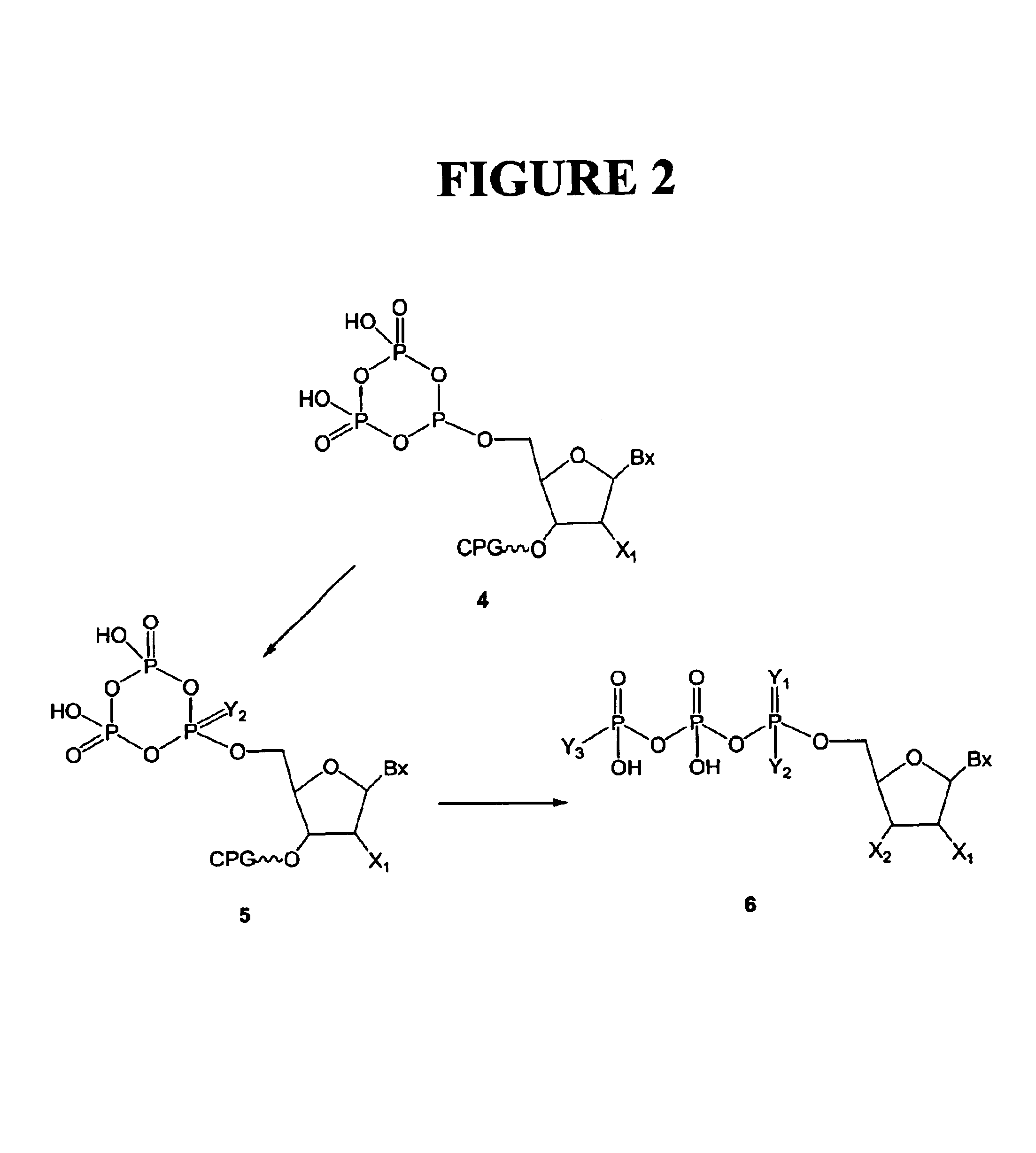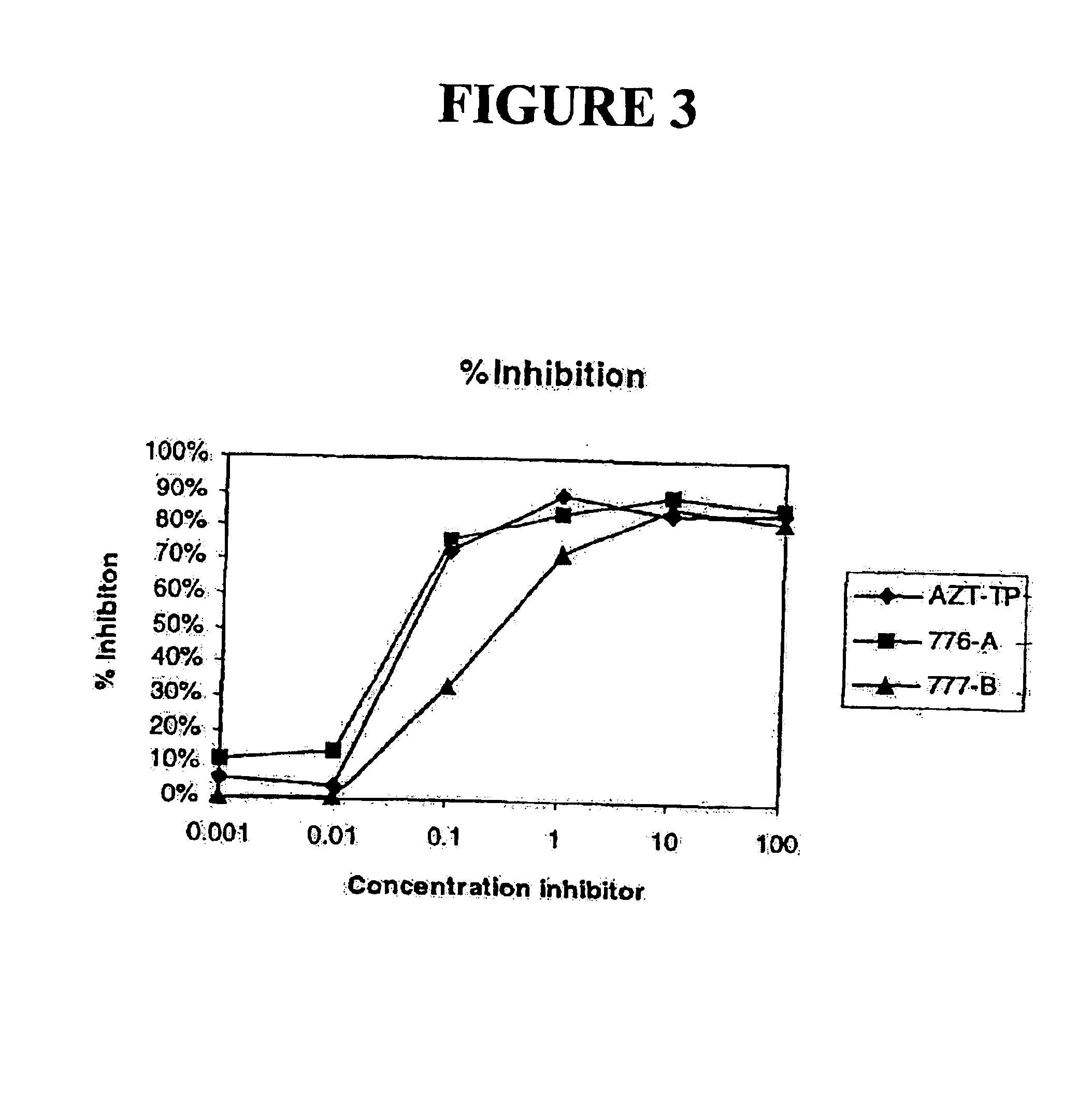Α-modified nucleoside triphosphates
a nucleoside triphosphate and nucleoside technology, applied in the field of modified triphosphate nucleoside compounds, can solve the problems of difficult combinations of charged ionic reagents with more lypophilic substrates, difficult to synthesize, and many nucleoside triphosphates are not particularly robust, so as to inhibit viral replication and inhibit rna replication
- Summary
- Abstract
- Description
- Claims
- Application Information
AI Technical Summary
Benefits of technology
Problems solved by technology
Method used
Image
Examples
example 1
Attachment of Nucleosides to Solid Support
[0153]Nucleosides were protected if necessary and attached to support media using standard procedures. A fully protected nucleoside is selected having a free hydroxyl group at the 2′ or 3′-position. A typical selection is a 5′-DMT-nucleoside having any exocyclic amino groups protected as the N-acyl group. The free hydroxyl group is attached to an amino functionalized solid support (e.g., controlled pore glass (CPG) or polystyrene using a succinate linking group). A general procedure is illustrated in by Sproat et al., Oligonucleotides and Analogues, Eckstein, F., Ed., IRL Press, Oxford. 1991; pp.49-86.
example 2
Procedure for the Synthesis of Solid Support Bound Cyclic Triphosphite(4)
[0154]An example of this procedure is shown in FIG. 1. Solid support derivatized with a selected nucleoside (as per Example 1, 100 μmoles) was placed in a small glass column fitted with a septum and equipped with a glass sinter and tap at the bottom (volume about 16 mL). The support was treated with a 3% solution of trichloroacetic acid in dichloromethane (2×10 mL) for 2 minutes to remove the 5′-protecting group. The solid support was washed with dichloromethane (10 mL), dry acetonitrile (10 mL), a dry mixture of pyridine and dioxane (10 mL, 1:3, v / v). A fresh 1M solution of 2-chloro-4H-1.3.2-benzodioxaphosphorin-4-one in dry dioxane (4 mL) was then added to the support suspended in dry pyridine / dioxane (8 mL, 1:3, v / v). The reactor was gently agitated for 20 minutes, the phosphitylating solution removed under an atmosphere of argon and the support washed with a dry mixture of pyridine and dioxane (10 mL, 1:3, ...
example 3
Procedure for the Synthesis or α-amino Triphosphate Nucleosides
[0155]An example of this procedure is shown in FIG. 2. The cyclic triphosphite (4, Example 2) was oxidized using iodine and a primary amine, such as an alkylamine. The selected primary amine (4 mL) was suspended in a solution of iodine in tetrahydrofuran (224 mg in 5 mL). The solid support was treated with the oxidation mixture containing the primary amine and agitated for 40 minutes at 25° C. Excess oxidation mixture was removed by extensive washing with dry tetrahydrofuran (10 mL) and dry acetonitrile (10 mL). Oxidized intermediate (5) was hydrolized with water (5 mL at 25° C. for 90 minutes). The α-amino modified nucleoside triphosphate was cleaved and deprotected by treating the solid support with 25% aqueous ammonia in a sealed glass vial (15 hours at 25° C. and 2 hours at 55° C.).
[0156]The cooled ammoniacal solution of crude α-amino modified nucleoside triphosphate was evaporated to dryness. The residue was dissolv...
PUM
| Property | Measurement | Unit |
|---|---|---|
| Fraction | aaaaa | aaaaa |
| Fraction | aaaaa | aaaaa |
| Fraction | aaaaa | aaaaa |
Abstract
Description
Claims
Application Information
 Login to View More
Login to View More - R&D
- Intellectual Property
- Life Sciences
- Materials
- Tech Scout
- Unparalleled Data Quality
- Higher Quality Content
- 60% Fewer Hallucinations
Browse by: Latest US Patents, China's latest patents, Technical Efficacy Thesaurus, Application Domain, Technology Topic, Popular Technical Reports.
© 2025 PatSnap. All rights reserved.Legal|Privacy policy|Modern Slavery Act Transparency Statement|Sitemap|About US| Contact US: help@patsnap.com



